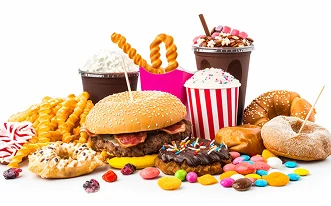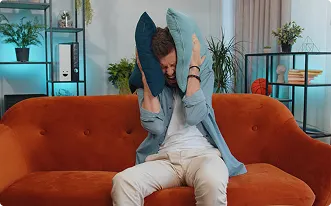Take a deep breath.
Feels refreshing, right?
Now imagine that the very air you’re breathing, something you depend on every second, is silently damaging your lungs.
You can’t see it. You can’t smell it most of the time. But it's invisible, yet powerful enough to change the way you breathe, live, and feel.
That’s the hidden reality of air pollution.
Pollution isn’t just about smoggy skies or traffic; it can reach deep into your lungs, bloodstream, and even your cells.
Even small-town air carries tiny particles that quietly harm your respiratory health.
Let’s explore how pollution affects your lungs and ways to protect them.
The Air We Breathe: What’s Really Inside It
Each time you step outside, you’re surrounded by a mix of gasses and particles not all of them friendly.
We like to think of air as just oxygen and maybe a little carbon dioxide. But the reality is far from that.
Polluted air is a complex cocktail of harmful substances particulate matter (PM2.5 and PM10), nitrogen dioxide, sulfur dioxide, carbon monoxide, and ozone, among others.
- PM2.5 refers to tiny particles that are 30 times smaller than a human hair. These are small enough to enter deep into your lungs and even slip into your bloodstream.
- Nitrogen dioxide (NO₂) mostly comes from vehicles and industrial emissions.
- Ozone, the same gas that protects us high up in the atmosphere, becomes harmful when it forms close to the ground.
Together, these pollutants don’t just “dirty" the air; they directly attack your respiratory system.
How Pollution Sneaks Into Your Lungs
Think of your lungs as two sponges, soft, porous, and designed to absorb oxygen. Now imagine those sponges exposed daily to dusty, chemical-laden air.
When you breathe polluted air, fine particles enter through your nose and mouth and travel down your windpipe into your lungs.
Some are filtered out by tiny hairs called cilia, but the finer ones, especially PM2.5 slip past your body’s defenses.
Once inside, these particles irritate your airways, causing inflammation and reducing your lungs’ ability to exchange oxygen efficiently.
Over time, this constant irritation can lead to chronic respiratory problems, making it harder to breathe even during simple activities like climbing stairs or walking briskly.
Short-Term Effects: When Your Lungs Send Warning Signs
Air pollution doesn’t always cause dramatic effects overnight. Sometimes, the warning signs are subtle, the ones we often brush off as “normal.”
- Coughing or throat irritation
- Sneezing and nasal congestion
- Shortness of breath after light activity
- Wheezing or chest tightness
- Tiredness or headaches
For people with asthma or allergies, polluted air can make symptoms much worse.
Even a short walk outdoors on a high-pollution day can trigger asthma attacks or severe breathing difficulty.
Children and the elderly are especially vulnerable because their lungs are either still developing or already weakened.
Long-Term Effects: The Slow Damage You Don’t See
The scary part about air pollution is not just what it does today but what it builds up to over time.
Prolonged exposure can lead to chronic respiratory diseases such as:
- Asthma – Pollution can both trigger and worsen asthma attacks.
- Chronic Obstructive Pulmonary Disease (COPD) – A progressive disease that makes breathing extremely difficult.
- Lung Cancer – Some air pollutants, especially diesel exhaust and industrial chemicals, are known carcinogens.
- Pulmonary fibrosis – A condition where lung tissue becomes scarred, reducing oxygen intake.
Studies have shown that people living in highly polluted areas have reduced lung capacity, even if they’ve never smoked.
In children, this means their lungs don’t grow to their full potential, affecting them for life.

Also, it doesn’t stop at the lungs. Tiny particles that enter your bloodstream can reach your heart, brain, and other organs, increasing risks of heart attacks, strokes, and even dementia.
It’s like your lungs are the front door pollution enters through, and once it’s in, it travels everywhere.
Indoor Pollution: The Hidden Enemy at Home
Most people think air pollution is only about what happens outside traffic jams, factories, and smog. But what about the air inside your home?
Indoor air pollution is just as dangerous, sometimes even worse. Common sources include:
- Smoke from cooking with wood or coal
- Burning incense sticks or candles regularly
- Pet dander and dust
- Cleaning sprays, air fresheners, or paints with strong chemicals
- Poor ventilation
Spending hours in poorly ventilated rooms filled with these pollutants can make you feel fatigued, cause headaches, and worsen breathing issues.
So yes, even the air inside your cozy living room might be quietly affecting your lungs.
When Pollution Meets Lifestyle
Let’s be honest, modern life doesn’t make things easier for our lungs.
We spend more time indoors, move less, and eat foods that don’t exactly boost lung health.
Combine that with exposure to polluted air, and your respiratory system is constantly fighting a battle it didn’t sign up for.
Smokers face an even higher risk. Cigarette smoke and air pollution work together like a toxic duo, doubling the chances of lung diseases.
Even second-hand smoke makes pollution’s effects worse.
How to Protect Your Lungs in a Polluted World
You can’t stop breathing, but you can breathe smarter. Here’s how to keep your lungs safe and strong, even when the air isn’t:
1. Keep an Eye on the Air Quality Index (AQI)
Check the AQI before heading outdoors. When levels are high, try to limit outdoor activities, especially intense workouts.
2. Mask Up When Needed
Use N95 or N99 masks that filter out fine particles. Regular cloth masks don’t stop pollution particles effectively.
3. Make Your Home a Clean-Air Zone
- Keep windows open during low-pollution hours.
- Add air-purifying plants like spider plant, peace lily, or aloe vera.
- Avoid burning incense or candles too often.
- Use an air purifier if you live in a high-pollution area
4. Strengthen Your Lungs Naturally
Exercise helps your lungs function better. Even simple activities like brisk walking, yoga, and breathing exercises like pranayama can improve lung capacity and efficiency.
5. Eat Foods That Support Lung Health
Fill your plate with antioxidant-rich foods like berries, oranges, spinach, and green tea. They help neutralize the damage caused by free radicals from pollution.
Omega-3 fatty acids (found in walnuts and fish) and vitamin C-rich foods (like citrus and bell peppers) also reduce inflammation in the lungs.
Anything that comes in a shiny wrapper and lasts months on the shelf likely contains preservatives, trans fats, and high sodium all linked to inflammation.
6. Quit Smoking
If you smoke, there’s no better time to quit. Smoking plus pollution is like throwing fuel on fire. It speeds up lung damage drastically.
7. Stay Hydrated
Water helps thin the mucus in your airways, making it easier for your lungs to flush out pollutants.
Children, the Elderly, and the Vulnerable: Why It Matters More
Children breathe faster than adults, meaning they inhale more air and more pollutants per minute.
Their lungs are still developing, making them more vulnerable to long-term damage.
Similarly, older adults and people with pre-existing lung or heart diseases face more severe effects from even moderate pollution levels.
What feels like “just dust” for one person could mean a hospital visit for another.
We may not be aware of something that feels scary as children breath faster than the adults, which means that they inhale more air and which means that they consume more pollution than us.
So it's high time that we must take precaution to protect our environment and our loved ones from this harsh world, which is filled with pollution and all the pollution.
The Bigger Picture: A Shared Responsibility
While personal care is important, the fight against air pollution isn’t just individual, it's collective.
Choosing public transport, planting trees, reducing waste burning, and supporting clean energy initiatives all play a part in creating healthier air for everyone.
Clean air shouldn’t be a luxury; it's a basic human right.
The Final Breath
Every breath we take is a quiet reminder of how connected we are to our environment. Our lungs don’t get to choose the air we breathe.
Pollution might be invisible, but its effects are not. It shapes our health, our energy, and our future.
So, the next time you step outside and take that deep breath, remember protecting your lungs starts with awareness and small, conscious choices. Because when the air heals, we heal too.
Latest News & Blogs

Foods That Can Trigger Inflammation and Joint Pain
Foods That Can Trigger Inflammation and Joint Pain

The Role of Mental Health in Chronic Pain Recovery
Mental Health and Chronic Pain Recovery: Why Mind Matters

Debunking the Myths: Does ‘No Pain, No Gain’ Apply to Joint Injuries?
No Pain, No Gain: The Truth About Joint Injuries



